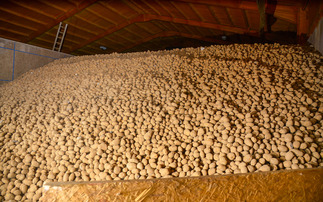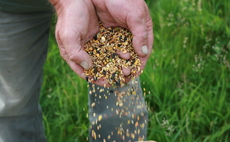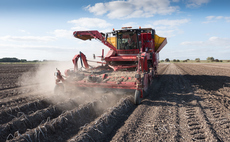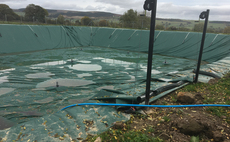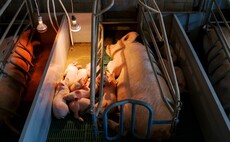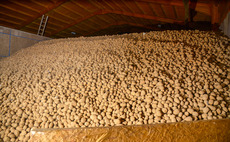
Monitor disease risk
With recent wet and warm weather being conducive to cercospera development, especially in the northern end of the beet-growing region, Alistair Wright, BBRO crop protection scientist, urged growers to learn to identify signs of the disease and look for these alongside usual checks for rust and mildew.
Dr Wright said: "Risk will be higher with the wider autumn day-night temperature differential and seasonal dews prolonging leaf wetness, especially if leaves are wet for eight hours or more, and in such situations, it is definitely worth considering a third fungicide for beet set to be lifted later on.
"From the spore-trapping work we have begun, we will be building a picture of the lag between spore appearance and disease in the crop. We are now seeing the disease every year, even when we are not getting those conditions we would expect cercospera to like, so my gut feeling is there are strains evolving that like the British climate.
"Genetic susceptibility is something we have not previously needed to consider, but that is changing. It could be that we have to prophylactically protect crops from cercospera in the near future, although this may potentially pay dividends in negating the need for late-season third fungicide applications."��

Following the approval of Revystar (mefentrifluconazole + fluxapyroxad) for use in sugar beet this season, Simon Bowen, BBRO head of knowledge exchange, emphasised the need to use the product properly to protect its long-term efficacy.
"Having examined crops during mid-September in west Norfolk which had received Revystar, there was a clear difference in efficacy, with some having significantly higher rust and cercospera levels than others," said Dr Bowen.
"The worst affected ones had received Priori Gold (azoxystrobin + difenoconazole) as their first fungicide, followed 20 days later by Revystar in the third week of August.
"It became clear that where the rust and cercospera infections were higher, the full 1.0 litre per hectare rate of Revystar had not been used - it had been as little as half that. Crops treated at lower rates and where gaps have been stretched to 20-26 days are where problems have resulted, particularly with cercospera. In these circumstances, the chemistry simply will not work properly, and its long-term efficacy will be affected for all.
"Dose response work has shown the full 1.0l/ha rate is particularly essential for full cercospera control, with 0.8l/ha suitable only where cercospera is not an issue. We know that even at 0.8l/ha some longevity of control is lost, so full rate use will maximise its long-term efficacy in the sector as a whole."
Dr Wright also reminded growers that, after September 1, the use of Caligula (fluopyram + prothioconazole) is a further option to keep crops clean; its seven-day harvest interval versus Revystar's 28 days will potentially suit growers on early delivery contracts.
Read more:��How to maximise sugar beet potential after slow start
Take the opportunity to test soils
Georgina Barrett, BBRO crop scientist, urged growers to soil test at least every three to five years, to ensure any issues were addressed ahead of next spring's drilling.
Dr Barrett said: "While spring is okay, autumn is good timing, before any manure is applied or cover crops are sown. It is not only easier to dig, but natural microbial activity will be higher. Our soil health score cards can help address issues that need attention.��
"UK soils are naturally acidifying through acid rain, climate change and artificial fertiliser use, making regular pH testing important. Sugar beet cropping is a good point in the rotation to do this, and with it being a pH-sensitive crop, you are likely to quickly see benefits from corrective action if there is an issue, making nutrients more available, encouraging microbial activity and benefiting all crops in the rotation.
"Depending on soil type and rotation, to maintain a soil's optimum pH, liming every five years is the average likely requirement. The UK's current average is 12 years."
On the subject of cover crops, Dr Barrett noted the benefits they can bring ahead of drilling, including soil and nutrient retention, but acknowledged the green bridge risk they create.
"In particular, mixes containing brassicas present a virus-harbouring risk. That does not necessarily mean you should not use them, but do make sure you are achieving complete destruction at least six weeks before cultivations and beet drilling, which will also aid nitrogen release of potentially 30-40kg/ha.
"Frost action and crimping can work well, but where living green material remains, glyphosate application may be needed. We are surveying growers and lobbying to try and ensure this six-week recommendation fits Sustainable Farming Incentive regulations."
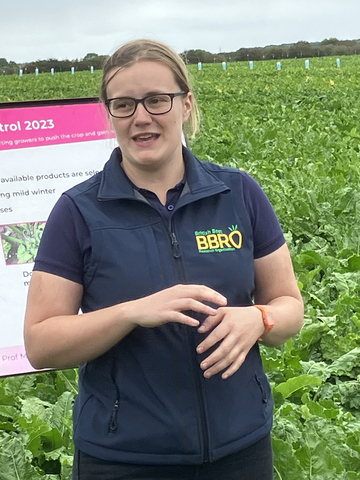
Read more:��New service aims to help understand��soil��science
Tips to reduce harvesting losses
BBRO head of field operations Stephen Aldis noted that some of the first beet lifted during the 2023/24 campaign was harvested in very wet conditions, with harvester operators having to work shallowly to keep beet clean, leading to some roots being knocked over.
He said: "That was exacerbated by some tight soils which led to some roots snapping where share action was insufficient to move them. Where this is an issue, it is good practice to follow the harvester on foot and examine harvested rows to ensure working depth is sufficient and no roots remain."
With whole beet delivery having now been the norm for almost a decade, many harvester operators are well-versed in setting up their machines to ensure only leaves are removed, said Mr Aldis.
"However, last year's frosts saw factory requests to ensure as much frost-damaged material as possible was removed in the field. That means it is essential to ensure that harvester toppers are checked and reset where necessary to remove only leaf material, now that we are in a new campaign and hopefully not facing frost for some time. Excessive topping will mean beet in storage will burn sugar as the living roots try to recover. We have tools available to measure crowning and root tip losses.
"Conversely, there have also been some factory reports of green material in beet intakes, likely coming from weed beet and fat hen. Try to address this where possible by ensuring you are topping - not crowning - sufficiently hard to ensure flails remove maximum green material. Where you are mulching and incorporating that material with the harvester, ensure it cannot feed back into the machine and the beet sample.
"On the subject of storage, while autumn weather is mild, clamps should be kept as open as possible, and we would advise not using bales to wall heaps, not pushing them high and not levelling them off, to ensure airflow is maximised. Maximum surface area will keep the beet as cool as possible and so maintain sugars. Work with your haulier before beginning lifting to ensure the crop is clamped for as short a time as possible."
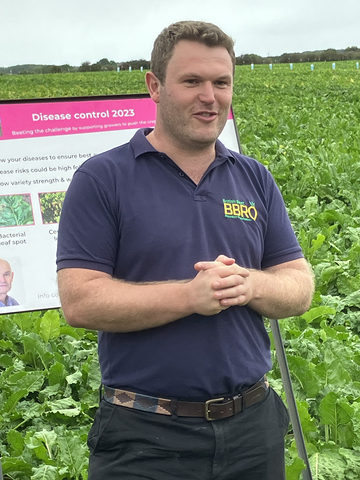
He revealed that there are new tools available for beet damage assessment this year, including an ‘electronic beet' which can be planted ahead of the harvester to identify points of potential root damage from harvesting through to cleaning/loading, and can also measure respiration gas losses in the clamp to help assess sugar losses.
"When I first began testing, losses averaged three tonnes per hectare, spiking as high as 10t/ha. At today's £40/t beet price, those losses are twice as costly. It pays to put as much time into assessing losses from your beet harvester, and adjusting to reduce them, as you would into a combine. There is a lot of income potentially being lost, so ten minutes walking behind the harvester will be time well spent."





